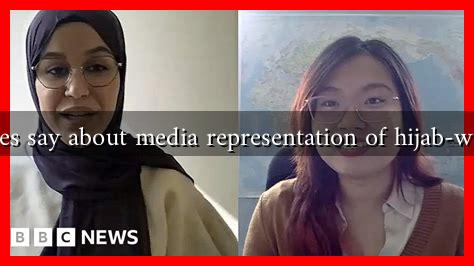-
Table of Contents
What Do Studies Say About Media Representation of Hijab-Wearing Women?
The representation of hijab-wearing women in media has been a topic of significant discussion and research in recent years. As societies become increasingly diverse, the portrayal of Muslim women, particularly those who wear the hijab, has garnered attention for its implications on public perception, identity, and social dynamics. This article delves into the findings of various studies, exploring how hijab-wearing women are represented in media and the effects of these portrayals on societal attitudes.
The Importance of Media Representation
Media representation plays a crucial role in shaping societal norms and perceptions. The way hijab-wearing women are depicted can influence public attitudes towards Islam and Muslim communities. Studies have shown that negative or stereotypical portrayals can lead to increased discrimination and misunderstanding.
- Influence on Public Perception: Research indicates that media portrayals can significantly affect how non-Muslims perceive Muslim women. For instance, a study published in the journal *Media, Culture & Society* found that negative representations often lead to fear and hostility towards Muslim communities.
- Impact on Self-Identity: Hijab-wearing women often report feeling marginalized or misrepresented in media narratives, which can affect their self-esteem and identity. A study by the *Journal of International Women’s Studies* highlighted that many hijab-wearing women feel pressured to conform to Western beauty standards due to media influence.
Common Stereotypes and Misrepresentations
Hijab-wearing women are frequently subjected to a range of stereotypes in media. These include:
- Victimhood: Many portrayals depict hijab-wearing women as oppressed or victimized, reinforcing the narrative that they lack agency. This perspective often overlooks the diverse experiences and choices of Muslim women.
- Exoticism: Some media representations frame hijab-wearing women as exotic or mysterious, which can perpetuate harmful stereotypes and reduce their identities to mere symbols.
- Radicalization: A significant number of media narratives associate hijab-wearing women with extremism or terrorism, contributing to Islamophobia and societal division.
Positive Representations and Counter-Narratives
Despite the prevalence of negative stereotypes, there has been a growing movement towards more positive and nuanced representations of hijab-wearing women in media. Some notable examples include:
- Television and Film: Shows like *Ramy* and *Ms. Marvel* feature hijab-wearing characters who are complex, relatable, and multifaceted, challenging traditional stereotypes.
- Social Media Influence: Platforms like Instagram and TikTok have allowed hijab-wearing women to share their stories and experiences, creating a more authentic representation that counters mainstream media narratives.
- Documentaries and News Features: Documentaries focusing on the lives of hijab-wearing women, such as *The Secret Life of Muslim Women*, provide a platform for their voices and experiences, promoting understanding and empathy.
Case Studies and Research Findings
Several studies have examined the impact of media representation on public perception and the self-identity of hijab-wearing women:
- A study conducted by the *Pew Research Center* found that 62% of Americans believe that media portrayals of Muslims are negative, which can lead to increased discrimination.
- Research published in the *Journal of Media and Religion* indicated that positive portrayals of hijab-wearing women can lead to greater acceptance and understanding among non-Muslims.
- A survey by the *Institute for Social Policy and Understanding* revealed that hijab-wearing women who see positive representations in media report higher levels of self-esteem and community engagement.
Conclusion: The Path Forward
The representation of hijab-wearing women in media is a complex issue that requires ongoing attention and advocacy. While negative stereotypes persist, there is a growing movement towards more positive and authentic portrayals. As media continues to evolve, it is essential for creators, consumers, and scholars to challenge harmful narratives and promote diverse representations that reflect the realities of hijab-wearing women.
In summary, the studies indicate that media representation significantly impacts societal attitudes and the self-identity of hijab-wearing women. By fostering a more nuanced understanding of their experiences, we can work towards a more inclusive and empathetic society. For further reading on this topic, you can explore resources from the Pew Research Center and the Institute for Social Policy and Understanding.


